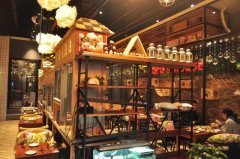Update Time:2018-06-21Click:276

In the continuum of fashion trends, there's an unspoken truth: fashion is cyclical, with history inevitably repeating itself. This resounding reality is reflected in the significant resurgence of vintage fashion, where designers find inspiration from the past to influence their present creations. This article aims to traverse through this journey, revealing how past decades continue to shape the designers of today.
The revival of vintage fashion is not merely about nostalgia - it reflects a dynamic dialog between the old and the new. As modern creatives grapple with new ideas and concepts, the past provides an unfailing reservoir of inspiration, allowing designers to re-contextualize vintage ideas within contemporary narratives.
Take, for instance, the continually recurring inspiration from the 1970s. The decade, celebrated for its bohemian free-spiritedness and glamorous disco era, exemplifies an innate fusion of comfort and style. Elements like wide-legged pants, maxi dresses, floral prints, and pastel palettes have been revisited time and again. Brands from high-end like Gucci to mainstream retailers such as Zara, all embody textures and silhouettes influenced by this vibrant decade.
The 80s, an era defined by its ostentatious taste, has crept back onto the runways and city streets. Manifesting a sense of power and confidence, the 80s trends like shoulder pads, bold colors, neon hues, and intricate sequin work are being reintroduced with a modern twist. Balmain, for example, is prominent for incorporating dramatic shoulder silhouettes, and Isabel Marant is widely known for translating the decade's vibrant spirit through her designs.
The classic and minimalistic styles of the '90s are also making a comeback. Minimalism is being embraced more than ever, with its versatile black and white color palettes, and the effervescence of denim, slip dresses, and monochromatic looks. Calvin Klein's sleek lines and Ralph Lauren's polished, timeless style are pitch-perfect examples of this era's influence.
The 2000s, often associated with maximalist aesthetics, is also re-emerging. The resurgence of low-rise jeans, velour tracksuits, and logomania signifies a renewed interest in this period's flamboyance. Luxury brands such as Dior, Fendi, and Louis Vuitton have reissued iconic bag designs from the 2000s, effectively revitalizing a sense of nostalgia while promoting their heritage.
But this vintage revival is not just about duplicating the past. It's a nuanced process of deconstruction and re-imagination - borrowing historic elements while adapting to the modern consumer's needs and aesthetic sensibility. The harmonious blend of retro prints with contemporary cuts or infusing classic silhouettes with modern fabrics exhibit the savvy navigation of past and present in designers' work.
Moreover, the resurrection of vintage fashion is also a response to the escalating concerns about environmental sustainability. Instead of contributing to the fast-fashion cycle, consumers are increasingly turning to vintage clothing - an act that minimizes waste and carbon footprints. Designers, too, are responding to this shift, crafting collections that echo the timeless vibrancy of the past eras without compromising on eco-conscious values.
In summary, the resurgence of vintage fashion provides an exemplar of the cyclic nature of trends while reinforcing the fact that styles of the past continue to have an enduring influence. As designers perpetually dip their toes into sartorial history for inspiration, and consumers lean towards sustainable choices, the blend of past and present continues to charm, reminding us all that in the realm of fashion, what's old eventually becomes new, and fashion, indeed, never dies.
In the dynamic realm of fashion, the cyclical nature of trends often witnesses a resurgence of bygone eras. But the translation of vintage into modern narratives isn't merely a straightforward echo of the past; it involves a complex process of re-contextualization by contemporary designers. Here's how designers navigate the interplay between the old and new to create styles that are fresh, relevant, and a tribute to the past.
One of the key ways in which designers reinvent vintage styles lies in the area of selective refinement. They meticulously analyze and cherry-pick elements from various decades, focusing on what aligns with current aesthetics and demand. For instance, the bohemian spirit from the '70s might be captured with modern stylings of wide-legged pants and maxi dresses, while the exaggerated shoulder silhouettes from the '80s are revisited in a more subtle, accessible manner by brands like Balmain.
Another approach involves fusing vintage motifs with contemporary design principles. Consider the minimalistic sensibilities of the '90s era, where the focus was on sleek lines and simplicity. Modern designers might blend these aesthetics with today's sustainably-sourced fabrics or inclusive sizing concepts, creating a collection that feels both nostalgic and rooted in the present.
Color theory also plays a significant role in the re-contextualization process. While vintage eras had their distinct color palettes, today's designers often reimagine these hues to suit current preferences and innovations in fabric technology. They might bring back the neon of the '80s or the pastels of the '70s, but tweak the shades to complement modern-day wardrobes or use more sustainable dyes.
Apart from elements such as silhouette, color, and design, designers also invest in storytelling to re-contextualize vintage ideas. With advances in technology and shifts in consumer consciousness, the narrative around a design is often as important as the design itself. Designers thereby frame their vintage-inspired collections around pertinent themes like sustainability, androgyny, body positivity, or artisanal craft, grounding the past in a modern context.
Moreover, drawing inspiration from historical pieces isn't confined to clothes. Accessories, too, bear witness to this revival. The reissue of iconic bag designs by brands like Dior and Fendi or the return of chunky, statement footwear aren t merely attempts to mimic the past, but are strategic endeavors to blend heritage with contemporary consumer sentiments.
In sum, designers re-contextualize vintage ideas by revisiting the past, extracting its essence, and skilfully weaving it in with today's design concepts and narratives. The result isn't just a d j vu moment, but a harmonious co-existence of retro charm and modern relevance that propels the industry forward while paying homage to its oscillating history.
What are some examples of non-renewable resources used in the production of fast fashion
Vintage Vibe The Resurgence of Past Decades in Contemporary Fashion
Untangling Threads Prognosticating Trends and Shifts in the Future of Menswear
Crafting Alter Egos Unveiling the Confluence of Creativity and Self-expression in Cosplay Fashion

Unleashing Creativity: Fashion Trends Inspired by Art

2024’s Top Fashion Trends: An Exclusive Look

What are some examples of non-renewable resources used in the production of fast fashion

Vintage Vibe The Resurgence of Past Decades in Contemporary Fashion

Untangling Threads Prognosticating Trends and Shifts in the Future of Menswear

Casual-Luxe Defined Blending Comfort with Luxury in Fashion

Color Trends of 2024 Bridging Gaps in Fashion and Interiors

Crafting Alter Egos Unveiling the Confluence of Creativity and Self-expression in Cosplay Fashion

Decoding the Athleisure Trend High-fashion Meets Gym Wear

Defining Glamour The Evolution of Evening Wear